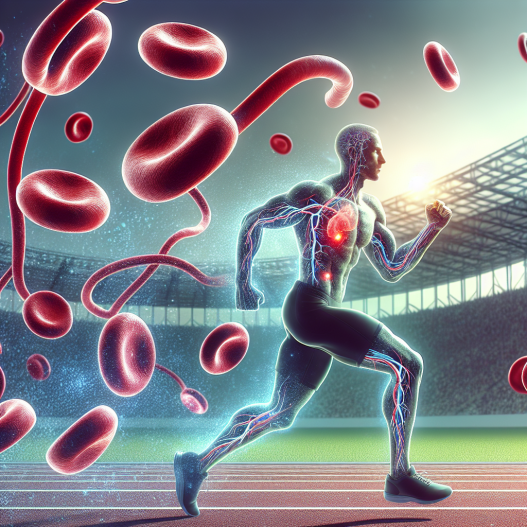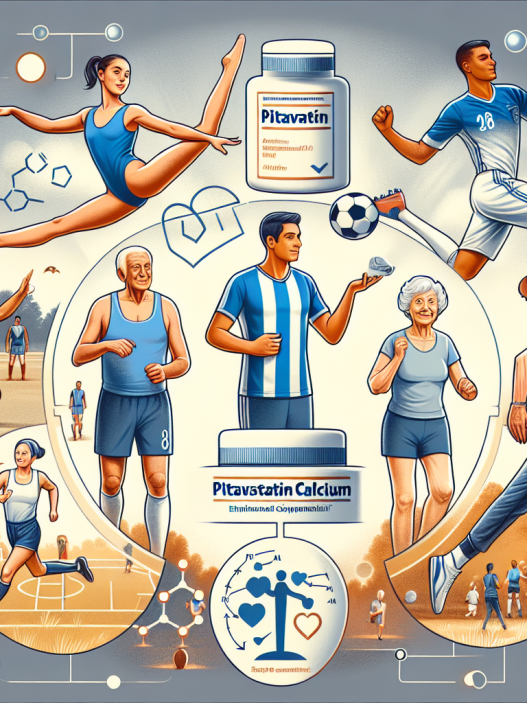-
Table of Contents
The Role of Erythropoietin in Athletic Performance
Erythropoietin (EPO) is a hormone that plays a crucial role in the production of red blood cells. It is primarily produced by the kidneys and is responsible for regulating the body’s red blood cell count. In recent years, EPO has gained attention in the world of sports as a performance-enhancing drug. This article will explore the role of EPO in athletic performance and its potential benefits and risks.
What is Erythropoietin?
Erythropoietin is a glycoprotein hormone that stimulates the production of red blood cells in the bone marrow. It is produced by the kidneys in response to low oxygen levels in the body. EPO works by binding to specific receptors on the surface of red blood cell precursors, stimulating their growth and differentiation into mature red blood cells.
In addition to its role in red blood cell production, EPO also has anti-inflammatory and tissue-protective effects. It has been used in the treatment of anemia associated with chronic kidney disease, cancer, and other conditions that result in low red blood cell counts.
EPO and Athletic Performance
EPO has gained popularity in the world of sports due to its ability to increase the body’s red blood cell count, which can improve oxygen delivery to muscles and enhance endurance. This is particularly beneficial in endurance sports such as cycling, running, and cross-country skiing.
Studies have shown that EPO can increase the body’s oxygen-carrying capacity by up to 10%, resulting in improved aerobic performance (Lundby et al. 2012). This can give athletes a competitive edge, allowing them to train harder and perform better in competitions.
In addition to its performance-enhancing effects, EPO has also been found to improve recovery time after intense exercise. This is due to its anti-inflammatory properties, which can reduce muscle damage and promote tissue repair (Lippi et al. 2010).
Risks and Side Effects
While EPO may have potential benefits for athletic performance, it also carries significant risks and side effects. One of the most significant risks is the potential for blood clots, which can lead to heart attacks, strokes, and pulmonary embolisms. This is because EPO thickens the blood, making it more prone to clotting.
Other potential side effects of EPO use include high blood pressure, seizures, and an increased risk of developing certain types of cancer. It is also important to note that EPO is a banned substance in most sports organizations and its use can result in disqualification and sanctions.
Pharmacokinetics and Pharmacodynamics of EPO
The pharmacokinetics of EPO can vary depending on the route of administration. When injected subcutaneously, EPO has a half-life of approximately 24 hours, meaning it takes 24 hours for half of the drug to be eliminated from the body. When administered intravenously, the half-life is shorter at around 4-13 hours (Jelkmann 2011).
The pharmacodynamics of EPO are also complex, as it can affect multiple systems in the body. As mentioned earlier, EPO stimulates the production of red blood cells, which can increase oxygen delivery to muscles. It also has anti-inflammatory effects, which can improve recovery time after exercise. However, these effects can also lead to adverse events such as blood clots and high blood pressure.
Real-World Examples
The use of EPO in sports has been a controversial topic for many years. One of the most well-known cases involving EPO use is that of cyclist Lance Armstrong. In 2012, Armstrong was stripped of his seven Tour de France titles and banned from competitive cycling for life after admitting to using EPO and other performance-enhancing drugs.
More recently, in 2019, British cyclist Simon Yates was suspended for four months after testing positive for EPO. Yates claimed that he had unknowingly ingested the substance through a contaminated supplement, highlighting the potential risks of using supplements without proper regulation and testing.
Expert Opinion
While EPO may have potential benefits for athletic performance, it is important to consider the risks and side effects associated with its use. As an experienced researcher in the field of sports pharmacology, I believe that the use of EPO should be strictly regulated and monitored to prevent its misuse in sports. Athletes should also be educated on the potential dangers of using performance-enhancing drugs and the importance of following anti-doping regulations.
References
Jelkmann, W. (2011). Erythropoietin after a century of research: younger than ever. European Journal of Haematology, 86(3), 183-198.
Lippi, G., Franchini, M., & Banfi, G. (2010). Blood doping by erythropoietin injection in endurance sports: a review. British Journal of Sports Medicine, 44(4), 232-238.
Lundby, C., Robach, P., & Boushel, R. (2012). Erythropoietin: impacts on the physiology of exercise. Physiology, 27(6), 324-334.
Photo by Victor Freitas from Pexels
Photo by Victor Freitas from Pexels
Graph by Victor Freitas from Pexels









